Garden Var - a popular means by which many gardeners heal the wounds on the trees. Such putty can be purchased at a specialty store or cook yourself, fortunately recipes garden Vara there is quite a lot. If you want to effectively protect their trees from diseases that may develop in the affected regions, we'll show you simple ways to prepare garden vara own hands.
substances Purpose
Experienced gardeners are probably familiar with the concept of the garden Vara, but for some, this term will be a novelty. Below, we describe in detail about the main purpose of this composition, consider its advantages and disadvantages.
Garden Var is a special puttage, which is used to protect the fresh wounds of trees from diseases, fungi, insects and parasites, as well as from the leaving of vegetable juice. Among other things, this composition contributes to the rapid healing of cuts. It should be taken into account that Var cannot be damaged immediately after they have formed. It is necessary to wait for the moment when the slice slightly snacks, and then it is accepted for the procedure.
Wounds on trees can be formed for various reasons, for example, as a result of the trimming of any fragment of the plant, after vaccination, due to the lesion by rodents or insect pests. If you do not protect the tree from the negative environmental factors on time, the infection may fall into the slice. In addition, cracks may appear on the damaged area, and the plant will begin to root.
There are several types of wounds on trees, they are classified as follows:
- sections obtained in the process of removing various plant fragments: branches, parts of the barrel;
- wounds obtained as a result of circular lesions of wood and bark;
- injuries resulting from partial damage to the external and inner layers of wood;
- damage from the breakdown or rubbed branches;
- dupes - solar injuries formed as a result of a long flow of infectious diseases of wood.
Garden Var has its own positive and negative qualities. The pros of this composition can be attributed to:
- ease of preparation and use;
- the ability to keep moisture in the plant to prevent the cutting of the cut and the appearance of cracks;
- frozen Garden Var does not smear and not dumping.
Among negative properties, the following can be allocated:
- after processing too large sections, wood in a damaged place does not quickly dry out enough, which can sometimes lead to a waterproofing in the wound area;
- working with Garden Warr in the cold season is rather difficult because it is quickly thick and poorly applied to plants;
- if non-payment components have been added to the tool, then in the heat of Var can melt, burning the bark of the tree.
To apply a tree as much harm as possible, certain rules should be observed when pruning:
- the procedure is better carried out in the middle of autumn or at the beginning of spring;
- try to plan the process on the day when it is dry weather;
- during trimming, do not remove large thick branches, it is better to cut off shoots with a thickness of no more than 2 cm - they are restored faster;
- conduct the procedure only well-sharpened tools;
- starting trimming, do not forget to clean the old bark, and if the slice turned out not enough smooth, then hang its surface with a garden knife.
How to cook garden camp do it yourself
The composition of the Garden Vara
In most recipes, substances are used in the majority of recipes:
- propolis or beeswax;
- edible fats: fat, vegetable oils;
- medical alcohol;
- resin, rosin;
- solidol, Olif;
- agrotechnical compositions: "heteroacexin", grape vine ash.
There are two main types of garden vars:
- welcome - these are those that need to warm up before use;
- cold-resistant are Vary, which includes alcohol.
Popular Garden Vara Recipes
Consider ways of cooking warm vars:
- The warm studies include Var Zhukovsky. Prepare such a garden Vary at home is quite simple, to do this, stock rosin, yellow wax and beef beef. Taking 1 part of each substance, prepare 3 different tanks and melt all the components separately. Then connect the ingredients in one mind, mix thoroughly. Leave the lot for some time so that it is slightly cooled. After that, type cold water into the deep container, pour the Vary there and wait until it turns. Remove the resulting substance from the water and come with your hands, forming a ball. Pack Var Zhukovsky into several layers of washesized paper and store in this form. This substance should be used in warm weather, because at cold temperatures it hardens. After applying the Vara on the cutting of a tree, cover the fabric processed place so that it does not attract the OS and bees.
- The second popular recipe for the Gasmazka is Var Pashkevich. Before making this Garden Var, stocking in the following ingredients: 4 pieces of yellow wax, 4 parts of turpentine, 2 parts of purified rosin and 1 part of the fracture fat. Prepare a metal ass, lay wax in it and top on a slow fire to a liquid state. Then gradually enter the rosin with the turpentine, and when the mass becomes homogeneous, pour fat and mix everything thoroughly. Cool Var follows the same way as in the previous case: type cold water into a large bucket and pour into it slightly cooled mass. Form the ball from the Vara and store it in the washed paper. When you handle trees, apply the composition with a thin layer on cotton fabric and wrap the damaged area of \u200b\u200bthe plant with this material.
The cold-resistant gardens belongs to Vary Reshetnikov, Gaug and Raevsky. We describe more of their preparation recipes:
- To make the ointment of the reshetnikov, prepare 10 pieces of the fir resin, 1 part of the yellow wax and 1 part of the wine alcohol. In the appropriate metal vessel, connect the wax with a resin and heated until the ingredients are missing. All this time you need to stir. Then cool the mixture to the warm state and enter the wine alcohol. With the Vary, the reshetnikov work is quite simple - it is applied to the damaged sections of the tree with the help of a brush. The substance tightly covers the entire surface of the cut, does not push and remains plastic at any temperature. Var Reshetnikova does not miss moisture, and also does not forms cracks.
- Before you cook Garden Var Gaug, go to such ingredients: 400 g of pine resin, 1 tsp. Food soda, 60 ml of medical alcohol and 4 g of gum. In the metal container, heat the resin and add alcohol into it. Game and soda dissolve in the water, pour into the sudine with a resin, mix well and cool down. Var Gaug is also applied to the trees with a brush.
- Vary Raevsky is preparing from 500 g of wood resin, 60 ml of medical alcohol and 2 tbsp. Linen oil. The resin must be melted on a slow fire, constantly stirring. Then you need to add alcohol and linseed oil into it. Thoroughly mixing all the ingredients, they can be stored in a tin can.
Properly cooked cold-resistant Vary must have such characteristics:
- it is enough liquid and easy to apply to the surface of the tree;
- remain elastic, do not fall asleep and do not form cracks;
- in the heat of Var should not be spread, and in the cold - freeze and crack.
Tip: So that the wound on the plant hesitated faster, you can add a little heteroacexin to the garden var. Dissolve 1 tablet.
Alternative garden ointment recipes
- Osoy from the most pressing ointments used for the treatment of trees in the 17th century, the mântcle of Forsith is considered. It is prepared from natural ingredients: 16 pieces of cow manure, 8 parts of ash, 8 parts of lime and 1 part of the sand. All components are thoroughly mixed and applied to the damaged area of \u200b\u200bthe plant with a thin layer of 2.5 mm. Then the processed zone sprinkles with chalk. Forsith's ointment is designed for fast use, it is not stored for a long time, so each time the need arises, the smelting should be prepared again.
- The ancient recipes of garden preparation can be attributed to the composition that is preparing from cow manure, oily clay and wool. Manure and clay should be taken in equal parts, and the wool is added to its discretion, so that the mask is quite viscous.
- Garden Var Veraguta is prepared in the following way: take 10 pieces of wood resin, 4 pieces of turpentine and 2.5 pieces of swine fat. Disappel the resin on slow fire, enter into it turpentine and fat. Pretty all mix and cool.
- Prepare the waterproof ointment, using 200 g of yellow wax, the same amount of shoemaker, 100 g of turpentine and 50 g of salts. All ingredients are connected in a metal container and melt on a small fire to a homogeneous state. Then cool the mass and shape the ball from it. Keep this Var in several layers of washed paper.
Not all gardeners smear the wounds on the trees of Garden Warr, some prefer to use ordinary oil paint for such purposes. Others enjoy olifa, applying it in several layers on a damaged area. And there are those who consider the use of smear simply inappropriate, since the tree can recover on their own for a certain time. However, the question of the use of Garden Vara on its plot to solve only you.
Features of trees treatment
So that the plant is rapidly restored after trimming and various damage, it is important to comply with all the rules of its treatment:
- You can handle garden wrair only healthy wood. Therefore, all damaged, dead, affected by infections or rotten parts of the tree need to be removed.
- The cut itself before processing should be very smooth. If there are convexities on it, they should be cut off and clean the wood surface.
- Treatment of damaged sites should be carried out in spring or in the first weeks of summer. If the sections were formed on a tree in later periods, they need to be entrusted and for a while to smear the Garden Warrier. With the onset of spring, the smell is removed, and the wounds are processed again, making it more carefully.
- Sections and damage to the tree are similar to the wounds on the human body - they are subject to attacks of various pathogenic organisms, parasites, fungi. Therefore, proceeding to the treatment of plants, do not forget about the rules of hygiene. Garden tool, as well as your hands must be clean - it will help to avoid the risk of a tree infection with any diseases. The same applies to and wounds - before processing they should be rinsed with clean water.
- When cleaning, heaps from rotten wood, treat stripped places with 5% copper sulfate solution. The working tool and hands should be displaced with alcohol.
- If you treat a plant from cytospose or nectry, damaged areas need to be treated with 2% copper sulfate solution, or a 5% iron sulfate solution. Hands and garden tools should be washed with soap and wipe with alcohol.

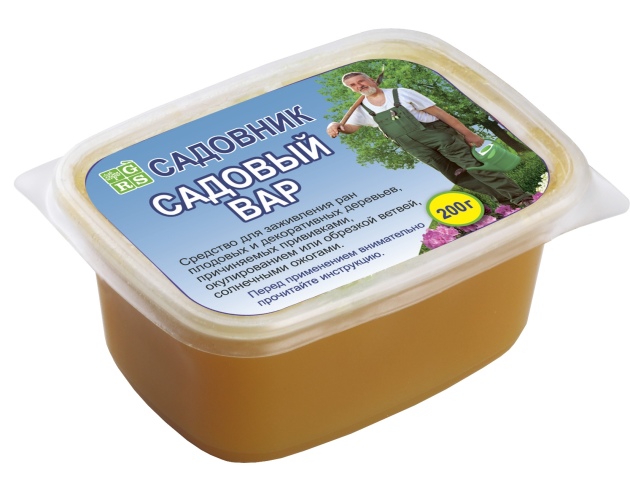
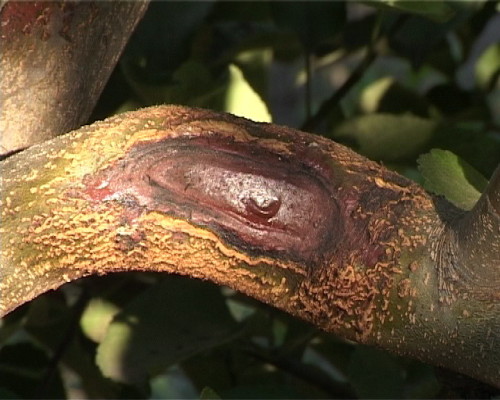
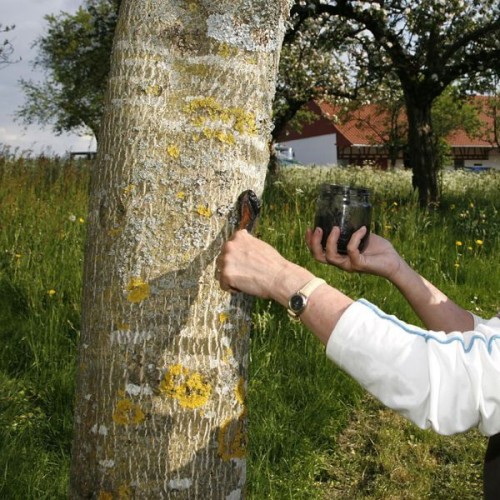
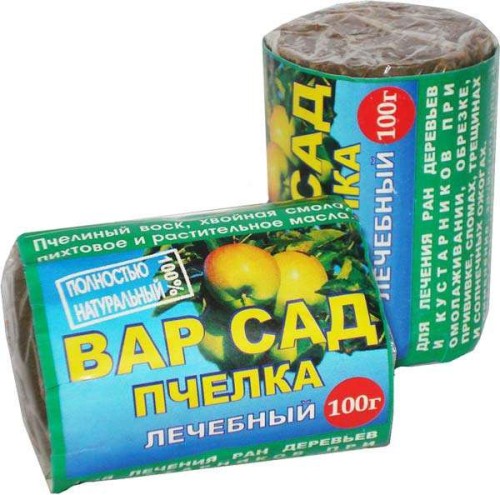
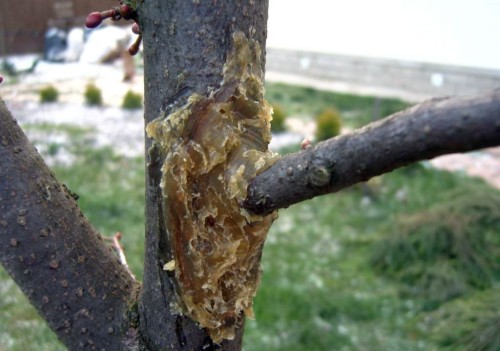
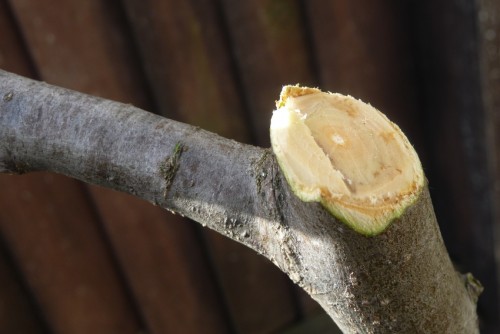












 Start a discussion ...
Start a discussion ...